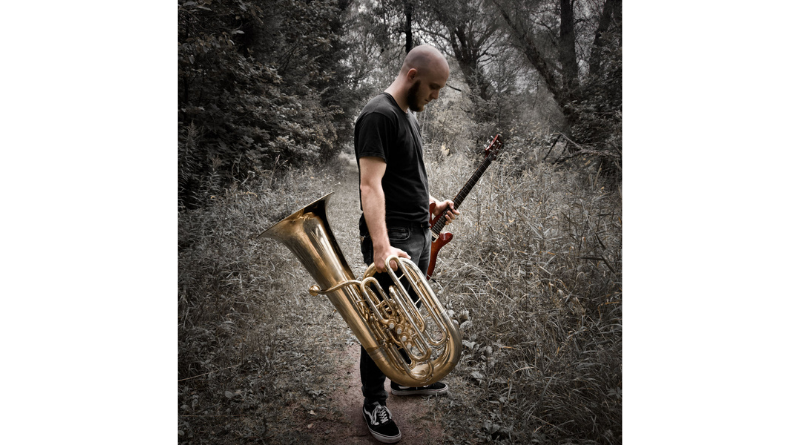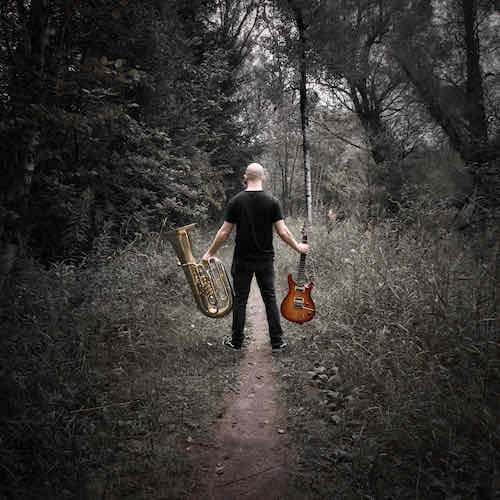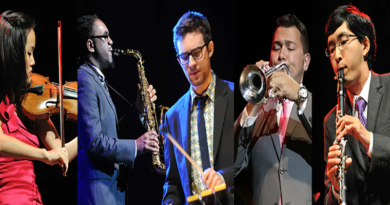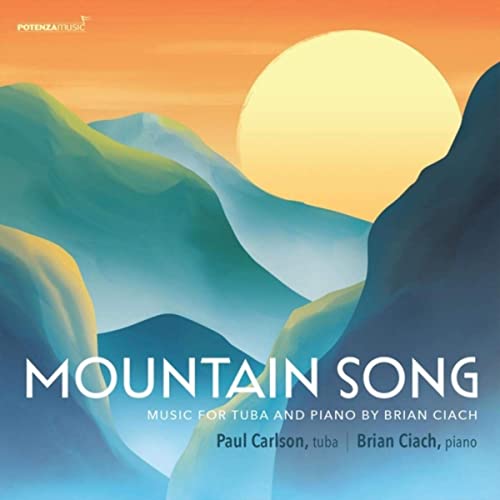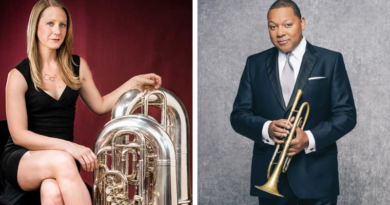Tubist Evan Zegiel Set To Release Heavy Metal Concerto
Piece Scored for Solo Tuba, Electric Guitars, Bass Guitar, and Drums
Releases on September 24th.
Heavy Metal Concerto was composed beginning in the late winter of 2020, shortly after the rapid global spread of COVID-19 forced governments to lockdown in an effort to prevent the transmission of the disease. The enforced solitude, along with my doctoral music theory course on Tonal Forms that semester, led me to the idea of composing a concerto in the style of the great Classical composers. I was also practicing guitar and bass more often during this period. Thus, the idea for a Classical-style concerto backed by a heavy metal band was born.
The first movement, “Fire in the Sky,” references the wildfires that have continued to rage year after year in the northwest region of North America, altering weather patterns across the continent and emitting tons of pollutants into the atmosphere. The form of that movement is based on the standard first-movement structure of a Classical concerto, with alternating ritornello sections and solo features, but it breaks many rules of key area progressions in order for it to fit more comfortably into the form of metal songs, songs which do not often modulate. Many of the 7-string, drop-tuned guitar riffs and styles of playing (heavy, chugging power chords and sparkly clean tones) are styled after modern progressive metal blended with hardcore, imitating bands like Periphery and Knocked Loose. The tuba solo part in this movement is heavily inspired by John Williams’s famous concerto for tuba.
The second movement, “The Story of More,” takes its title from the book of the same name by Hope Jahren. The book traces the history of human overproduction and overconsumption, activities which have led to our current state of affairs regarding climate change. This movement is freely structured and makes use of various electronic samples in the recorded version. Played in drop D tuning (with a capo used to bring it up to E-flat for the first half of the movement) on 6-string guitars, the styles of riffs closely imitate that of the progressive metal band Tool. Many of the drum grooves are infectious and complex, and the guitar riffs carry a dark and foreboding quality while remaining intense and active. The tuba solo part for this movement mirrors these qualities and contains the most expressive and soft moments of the entire piece.
The third movement, “Sentient Dissolution,” explores the possibility of human life fading from this planet. Some hypothesize that we will become a spacefaring species in the near future, beginning with colonies on the moon and on Mars. Some think we will cause our own extinction through our acceleration of planetary warming. Returning to the 7-string guitar, this movement most closely resembles the music of groove-metal and metalcore bands like Unearth and Lamb of God. Its form is based on the Concerto Rondo form often employed by Mozart for third movements of concerti, though, again, the key areas do not strictly follow this form. The tuba part presents some of the more virtuosic challenges of the piece and is again influenced heavily by the John Williams concerto. However, the end of the movement fades into obscurity instead of strictly repeating the “A” section of the form again, symbolizing either the extinction of humanity or our escape to the stars.
It is my hope that this concerto brings further light and reflection to the issues of climate change. I also hope that it inspires young players to find creative new ways to play the tuba. When I was a teenager, I wanted a piece like this to exist. I grew up loving heavy metal, and I always wanted to play the tuba in the same way that my guitar-shredding idols did. I hope that you enjoy performing this piece as much as I have enjoyed creating it. – Evan Zegiel
Source: Evan Zegiel
Click here to pre-order the recording on Bandcamp.
